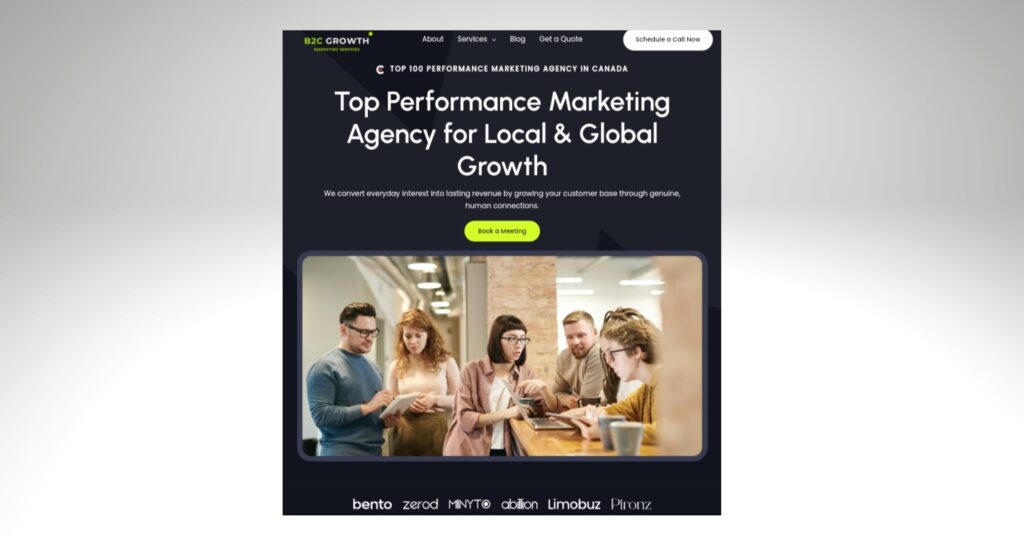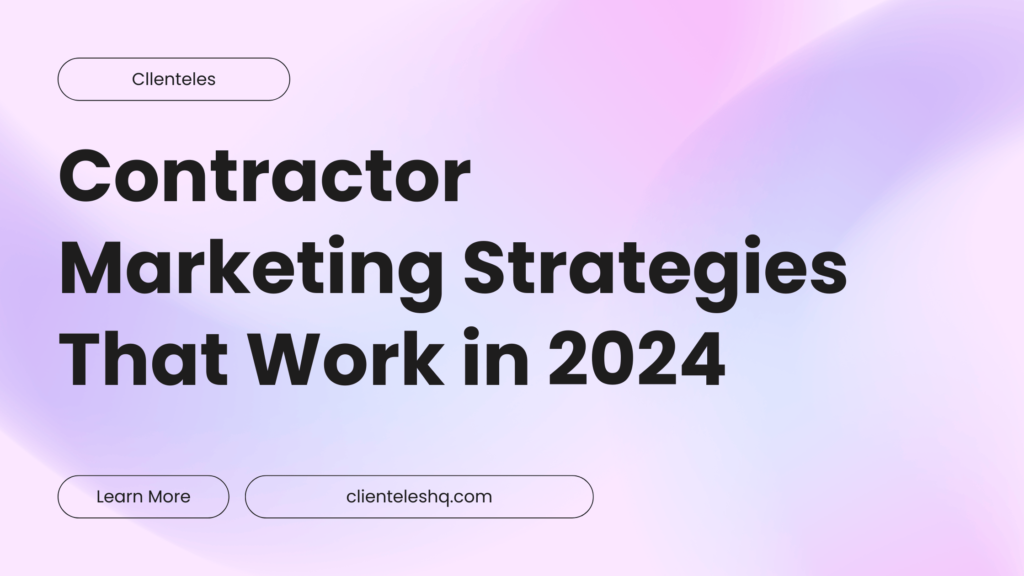
You Don’t Have a Traffic Problem. You Have a Conversion Problem.
Jasmine had been blogging every week for nearly a year but she didn’t know how to convert blog readers into email subscribers. Like many founders in 2025, she had traffic. But not traction. Many businesses publish blog content regularly, but struggle to turn readers into subscribers. If that sounds familiar, you should also check out our post on the top 5 digital marketing strategies for remodeling companies , it gives you a full picture of what really moves the needle in 2025.
She poured her energy into writing helpful guides about interior design that were relevant to the year 2025, everything from how to choose the right paint colors to creating the perfect cozy corner. The end goal was to get a lot of email subscribers. Her blog was ranking for several long-tail keywords. Some posts had over 1,000 reads per month and likes from blog readers
She was excited but at the same time she was also confused.
Because despite all the traffic, she had just 42 email subscribers in the end.
“People are reading yet they’re not joining,” she told us. “I thought the hard part was getting found on Google. I didn’t think converting them would be this tricky.” Jasmine continued.
Sound familiar?
Jasmine’s not alone. It’s a silent struggle that many solo founders, marketers, and content creators face in 2025. They’ve done the heavy lifting. They’re publishing good content. Their posts are showing up in search. Despite the fact that they’re getting shares and engagement, their email list is either frozen or crawling at a frustrating pace. Many blog readers but few email subscribers.
Here’s the truth: traffic does not equal loyalty. And loyalty is what would get you email subscribers.
This is because In today’s digital world, people are more protective of their inboxes than ever, this is why they won’t give up their email for “updates.” They need a reason. A strong one and one that makes sense to them in the moment they’re reading.
Let’s face it: your blog isn’t the only tab they’ve got open. You’re fighting for focus and once you have it, the next move matters.
This guide is about that move. It would help you change your strategy and in no time, you would be able to convert blog readers to email subscribers
It’s about the shift from passive reading to active subscribing. From browsing to bonding. We’re going to break down six smart, proven ways to turn your blog into a list-building machine without sounding desperate, annoying, or robotic while converting the most skeptical blog readers to enthusiastic blog readers
And yes , these methods work even if you don’t have thousands of readers yet.
1. Make the Signup Offer Valuable, Not Generic
What Doesn’t Work Anymore
Let’s be real , no one wants to “subscribe for updates” in 2025.
That phrase is invisible now. Blog readers see it and scroll right past. Why? Because it doesn’t tell them what they’re actually getting. It doesn’t feel valuable. And in a world where inboxes are overflowing, your readers need a better reason to let you in.
This is where most blogs go wrong. They think just being useful in the post is enough. But value has to be transferred from the post into the opt-in. And that means getting specific.
Imagine this: You’re reading a blog post about how to remodel a small kitchen. It’s filled with tips, visuals, and layout examples. You’re thinking, “Wow, this is helpful.”
Then you see a form at the bottom that says:
“Subscribe to our newsletter.”
You skip it.
What to Offer Blog readers Instead
Now imagine instead it says:
“Get our exclusive 5-page guide on Small Kitchen Layouts That Double Your Space only for email subscribers.”
That feels different. That feels useful.
It’s not a newsletter it’s an upgrade. It continues the conversation you were just having in your head.
The psychology here is simple: people are far more likely to take action if they feel like they’re getting something immediate and relevant. Not someday. Not maybe. Right now. And boom, you have a convert.
Think about your most-read blog posts. What “next step” could you offer that feels natural?
Some of the best converting opt-ins in 2025 include:
- A checklist that summarizes the post
- A downloadable template based on the topic
- A short email course that dives deeper into the issue
- Exclusive behind-the-scenes advice that wasn’t in the post
Each of these makes the signup feel like a gift, not a transaction.
Pro-Level Tip:
Test two lead magnets for your top blog post , one visual (like a Canva-designed PDF) and one email-based (like a 3-day series). Use ConvertKit or MailerLite to A/B test. Over a 7-day period, you’ll see which format your audience actually prefers and which converts better. In many cases, simple wins you email subscribers.
2. Place Your CTA Where the Reader’s Focus Already Is
What most blogs do
A common mistake blogs make is treating their email signup like a footnote.
You write a full, engaging post then slap a form at the very end, hoping readers make it that far. Or worse, you leave a tiny “Subscribe” box in the sidebar, where modern users barely look anymore, especially on mobile.
Here’s the truth: the best time to ask a blog reader to subscribe is when they’re already paying attention. As a result, it means you need to place your CTA within the content, not just around it.
Think of your blog like a conversation. You don’t wait until someone’s leaving to say something important , you speak when the moment feels right. That’s what an embedded call-to-action does.
What you should do instead

Let’s say your blog post is titled:
“5 Interior Design Tricks That Make a Small Room Feel Bigger”
Somewhere around Trick #3, you include a small, focused CTA:
“Want our printable Room Styling Checklist to help you apply these tips? Get it here , free for subscribers.”
Boom. You’ve struck while the reader is still engaged. You’ve made it feel like a helpful nudge, not a hard sell to your blog readers.
These in-line CTAs convert better because they show up at the right time, not just at the end time.
You can use:
- A simple bolded sentence with a hyperlink
- A colored callout box in between paragraphs
- A graphic banner that blends with your brand
Stat to Know:
HubSpot reports that in-content CTAs generate up to 4x more conversions than end-of-post forms.
And you’re not limited to just one placement. On a single blog post, it’s okay to mention your opt-in:
- Near the top (after the intro)
- Once in the middle
- At the end for good measure
Each one is a chance to convert. You’re not being annoying , you’re giving the blog reader more than one door to walk through.
Pro-Level Tip:
Use a heatmap tool like Hotjar or Microsoft Clarity on your blog. Look for scroll-depth and click patterns. Then, insert your CTA where users slow down, click, or linger. That’s your gold zone. Adding one call-to-action in that spot alone can increase conversions by 20–30%.
3. Use Popups the Smart Way — Personalized, Timed, and Thoughtful


Know this truth
Let’s address the elephant in the room: most blog readers hate popups.
They interrupt, block content as well as feel aggressive. That’s why so many brands gave up on them. But here’s the twist when done right, popups can actually work better in 2025 than ever before.
It’s not about whether you use a popup. It’s how you do it.
How do you do it?
Smart brands today don’t blast every visitor with a popup five seconds after page load. Instead, they use behavior-based triggers ; subtle, timely, and personalized.
Here’s how:
- Scroll-triggered popups appear after a user reads 50–70% of a post. They’ve shown interest, so the offer feels earned.
- Exit-intent popups activate when the mouse moves toward the back button or browser bar , giving you one last chance to engage.
- Time-delay popups show after 30–45 seconds, once the reader has had time to settle in.
And just like your in-content CTAs, your popup offer needs to be specific.
Let’s go back to that blog on small room design. Imagine a popup that reads:
“Need help styling your space? Get our free Room Layout Guide , sent straight to your inbox.”
That’s far more appealing than a generic “Subscribe for tips.”
Plus, modern tools like ConvertBox, Sleeknote, and OptinMonster allow you to customize popups based on:
- What page someone’s on
- How many posts they’ve read
- Where they’re visiting from
Stat to Know:
Pro-Level Tip:
Create category-specific popups. Readers on SEO content should see different offers than readers on branding or remodeling content. Tailor each popup message to the topic , it’ll double your relevance and boost signups without feeling repetitive or spammy.
Popup fatigue is real. But when your timing is respectful and your message feels personal, people don’t mind. In fact, they welcome it especially if the reward is something they actually care about.Let’s address the elephant in the room: most people hate popups.
4. Add Social Proof to Build Trust at the Moment of Opt-In
Here’s something we don’t talk about enough in marketing:
People don’t join your email list because you think it’s great.
They join because they believe other people already trust you.
That belief that others are already benefiting is what gives them the confidence to opt in. And in 2025, when skepticism is sky-high, proof matters more than promises.
Social proof is the missing piece in most signup forms. But done right, it changes everything and helps you convert blog readers to email subscribers easily.
Get it right
Let’s look at some examples of high-converting trust signals near opt-ins:
- Subscriber count: “Join 3,200 smart business owners who read our weekly insights.”
- Reputation by association: “As featured in Shopify, Semrush, and Mailchimp.”
- Screenshots of feedback: Real reader replies like “This checklist helped me book two new clients last week , gold!”
- Ratings or results: “Rated 4.8/5 by over 500 subscribers” or “Our templates helped readers save 6+ hours last month.”
Notice something? None of these are braggy. They’re subtle. Specific. Relatable.
And they help people do the thing they already want to do ,subscribe with less hesitation.
Think of it like this: your reader is on the fence. They like your content. They’re curious. But they’ve signed up for too many email lists in the past that turned out to be spammy, boring, or just not helpful.
To convert blog readers to email subscribers, your job is to reassure them at that moment of decision.
Stat to Know:
Nielsen reports that 92% of consumers trust recommendations from real people even strangers , more than messages from brands.
That means your best sales tool isn’t you , it’s your audience.
Pro-Level Tip:
Create a mini social-proof strip just below your form. It can include:
- A real screenshot of a reader’s email reply
- A short quote from someone who used your lead magnet
- A thumbnail collage of happy subscribers (if you run a community)
Bonus points if you rotate these monthly to keep things fresh and real.
Bottom line? Trust is earned in inches and social proof builds that bridge.
5. Turn Blog Posts into Email Series (Not Just One-Off Downloads)
Growing an email list in the right way
Most people think growing an email list means offering a freebie like a PDF checklist or a swipe file. And yes, those still work.
But if you want deeper trust, more engagement, and higher conversions, offer something better: a helpful, bite-sized email series based on your blog topic.
Instead of giving your reader one download and hoping they stick around, you guide them through a short journey delivered through their inbox.
Let’s break it down.
Say you wrote a blog titled:
“How to Remodel Your Kitchen Without Overspending”
Here’s how you can turn that into a 3-part email series:
- Email 1: “The 3 Costliest Mistakes Homeowners Make During Renovations”
Short. Relatable. Insight-driven. - Email 2: “The $500 Kitchen Trick That 8 of Our Clients Used to Save Big”
Tactical. Practical. Shareable. - Email 3: “How to Find a Trustworthy Contractor (And What to Ask First)”
Helpful. Protective. Empathetic.
Each email builds on the blog post but goes deeper. By the time they’re done reading all three, the subscriber feels more connected to your brand. because they’ve learned something valuable. You’ve shown up in their inbox multiple times. That’s relationship-building.
And now when you invite them to book a call or download your main lead magnet, they’re far more likely to act.
Why it works:
- People like small, clear wins delivered over time
- You stay top of mind without spamming
- You condition them to open your emails
- It builds anticipation, which is rare in content marketing
Stat to Know:
Mailchimp reports that welcome email series generate 4x more opens and 5x more clicks than standard newsletters.
Pro-Level Tip:
Use your blog’s comment section or social shares to figure out which post is resonating most. Then build your first email series off that post you’re meeting your audience where they already care. This is one top tip that would help you convert blog readers to email subscribers.
Also: end your series with a soft CTA like
“If you liked this series, you’ll love our weekly strategies. Click here to stay on the list.”
That gentle nudge turns short-term readers into long-term subscribers.
Bonus Strategy: Add Gamified Opt-ins for Instant Engagement
People love to play
We’re wired for it. Whether it’s spinning a wheel, answering a quiz, or unlocking a “mystery” gift, there’s something about light, low-effort engagement that makes us want to click. Games are fun way to convert blog readers to email subscribers.
And in 2025, where inbox fatigue is real and attention spans are shrinking, smart brands are using gamification to stand out and convert.
Let’s be clear: we’re not talking about cheesy casino-style gimmicks. We’re talking about clean, brand-aligned micro-interactions that feel helpful, not pushy.
Some high-converting gamified opt-ins include:
- Personality quizzes: “What Kind of Home Office Suits Your Productivity Style?”
- Spin-to-win wheels: “Unlock a free template, guide, or 10% discount — spin to see what you get!”
- Interactive challenges: “Join our 5-Day Mini Challenge — we’ll send each tip straight to your inbox.”
- Scratch cards / mystery unlocks: “Scratch to reveal your bonus resource — available only this week.”
What makes these work is the shift in energy. Instead of saying “Please give me your email,” you’re saying “Let’s have a little fun and you’ll get something useful out of it.”
The Psychology at play
Gamified opt-ins tap into curiosity, reward-seeking, and autonomy — three key motivators in behavioral design.
You’re inviting your readers to play a small game… and their reward? Valuable content, tailored to them.
Stat to Know:
Outgrow reports that interactive content (like quizzes) generates up to 2x more conversions than static forms. In one case, a home improvement brand saw a 43% opt-in rate from a quiz compared to 17% from a regular form.
Pro-Level Tip:
Tie the quiz or game directly to your blog content. For example, if your post is about digital branding, your quiz could be:
“What’s Your Brand Voice Style?”
At the end, offer a personalized content template or tone guide — sent by email.
Want a real example?
You could build this:
Quiz Title: “What Type of Lead Magnet Should You Create Next?”
- Question 1: “How long are your average blog posts?”
- Question 2: “Do your readers prefer how-tos or inspiration?”
- Result: “You should create a 5-day email course — we’ll show you how.”
- CTA: “Enter your email to get the setup template + 3 real examples.”
It’s fun. It’s personal. And most importantly, it’s helpful.
Your move: Build a simple quiz using tools like Interact, Typeform, or ScoreApp. Launch it on one high-traffic blog post and track opt-ins for 7 days.
Chances are, you’ll be pleasantly surprised.
Final Word: From Reader to Subscriber and Beyond
Let’s recap the real story here.
Efforts made to convert blog readers to email subscribers isn’t about throwing more forms on the screen. It’s not about shouting louder or offering more freebies. It’s about building a moment a meaningful moment where your reader says, “Yes, this is worth my email.”
In 2025, the brands that win don’t act like marketers.
They act like teachers. Like guides. Like allies.
They don’t interrupt. Instead they invite.
They don’t just sell. Rather they serve.
And when they ask for an email, they make it feel like a gift , not a gimmick.
Here’s what we’ve covered:
✅ Make your offer irresistibly specific not vague
✅ Place your CTAs where the reader is actually paying attention
✅ Use popups that respond to behavior, not fight against it
✅ Add social proof that builds trust in seconds
✅ Turn your blogs into journeys, not just one-time reads
✅ And yes , bring in a little fun with gamified opt-ins
Each one of these is simple on its own. But together, they create an ecosystem of trust, value, and conversion.
And that’s how you grow an email list that actually fuels your business. Not vanity metrics. Not ghost subscribers. Real people. Authentic leads. Genuine connection.

